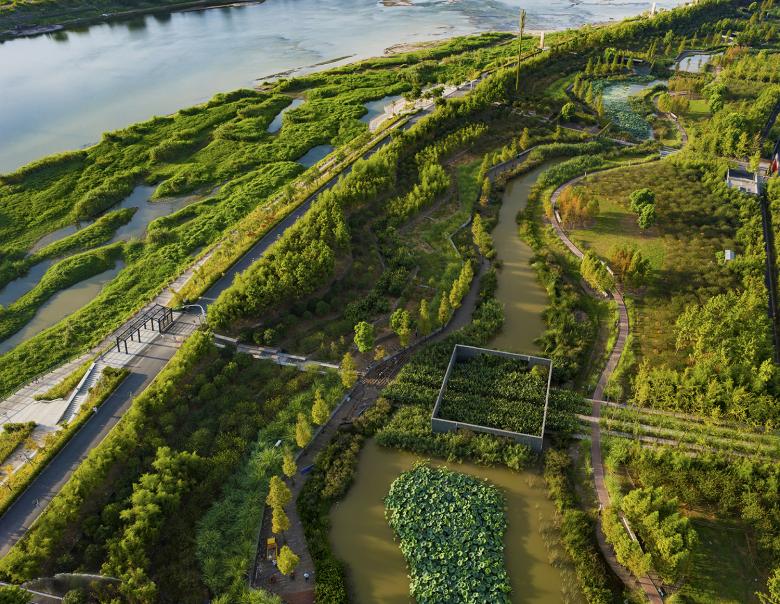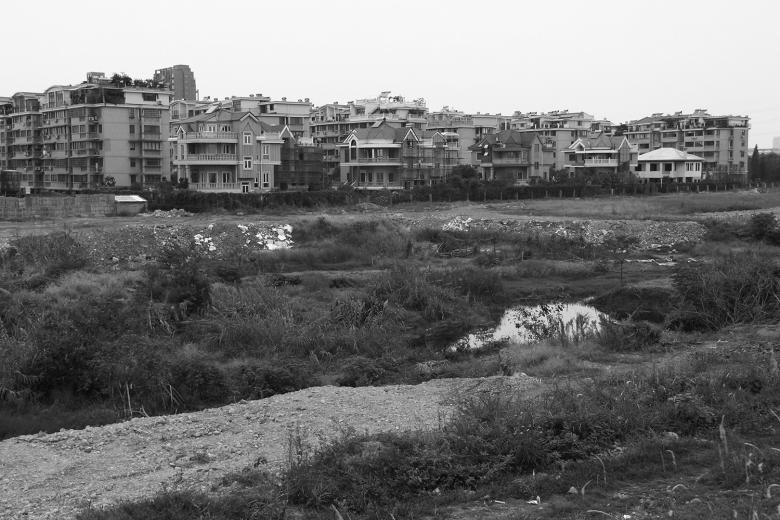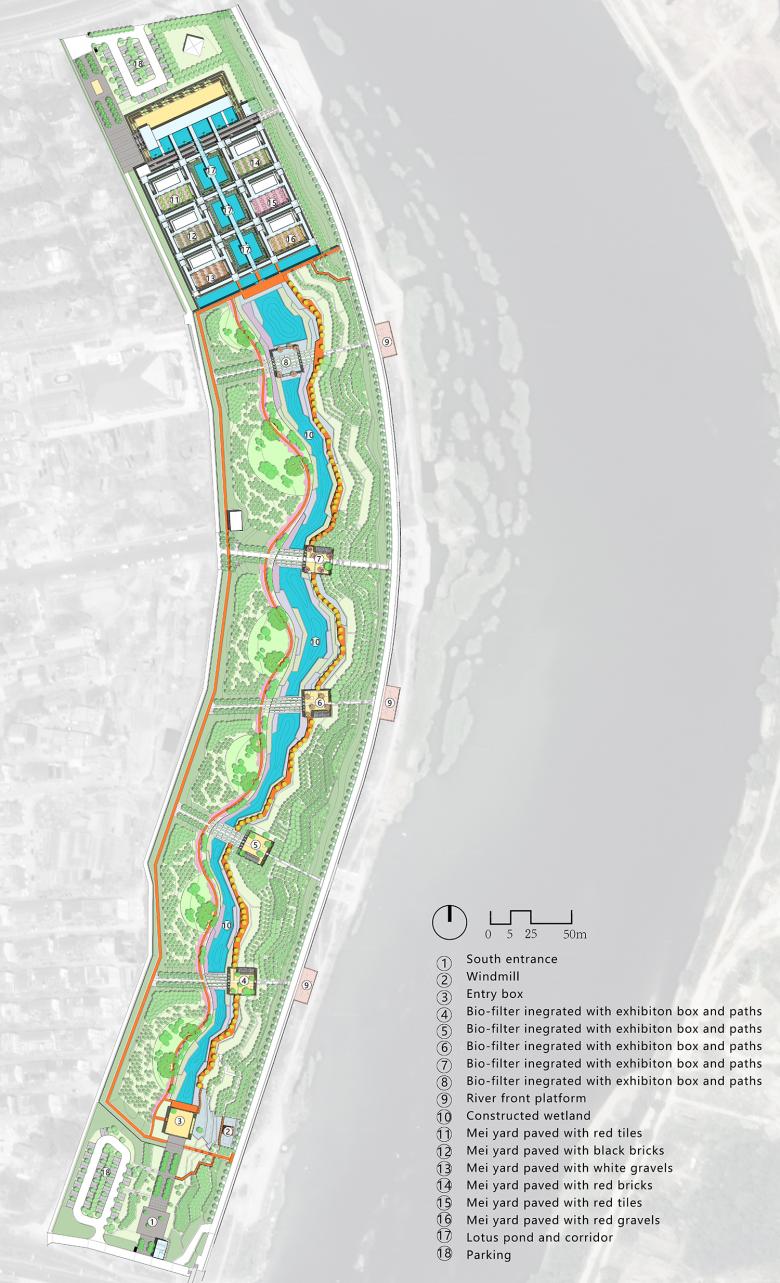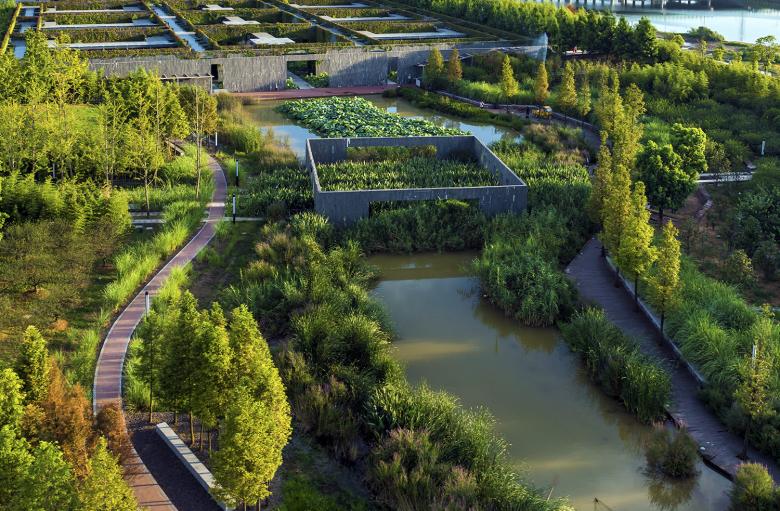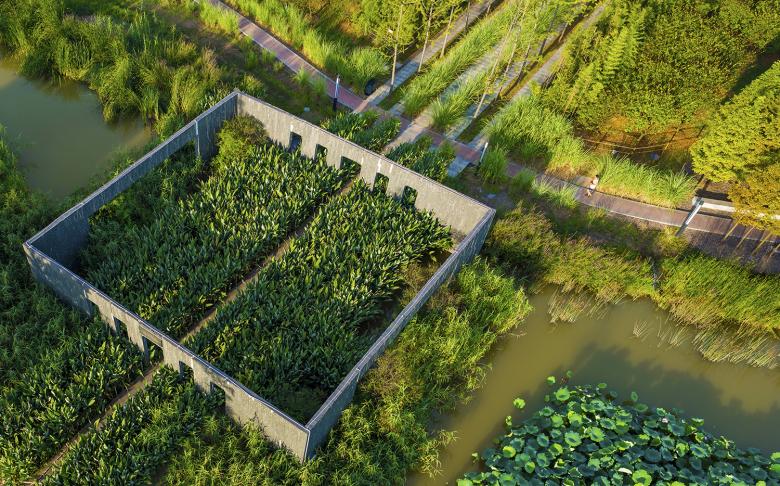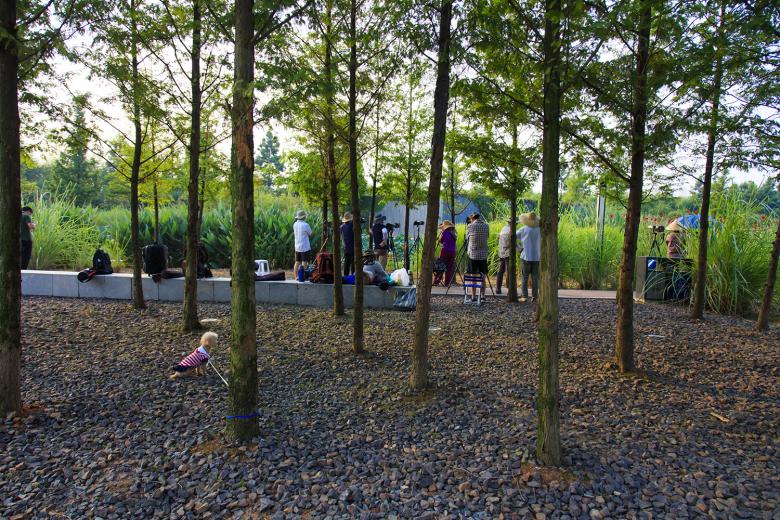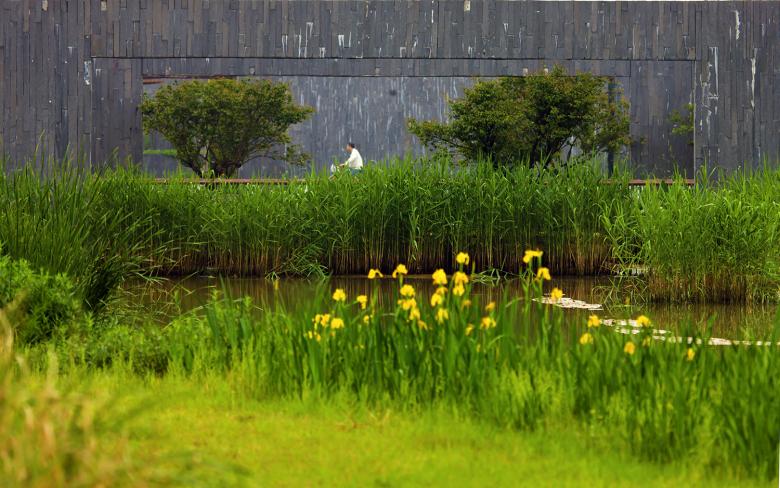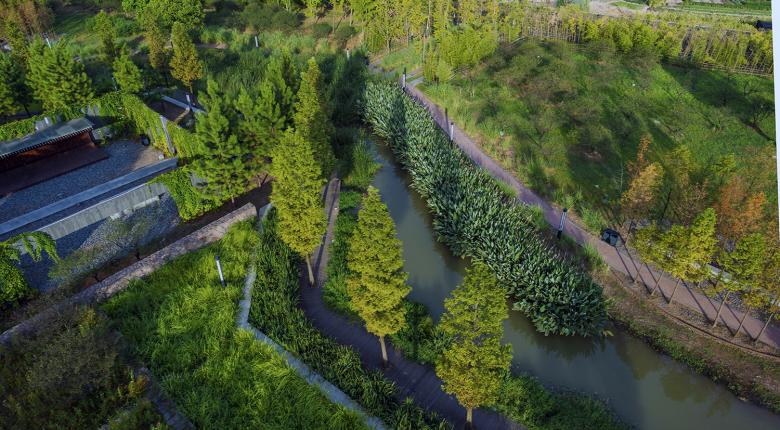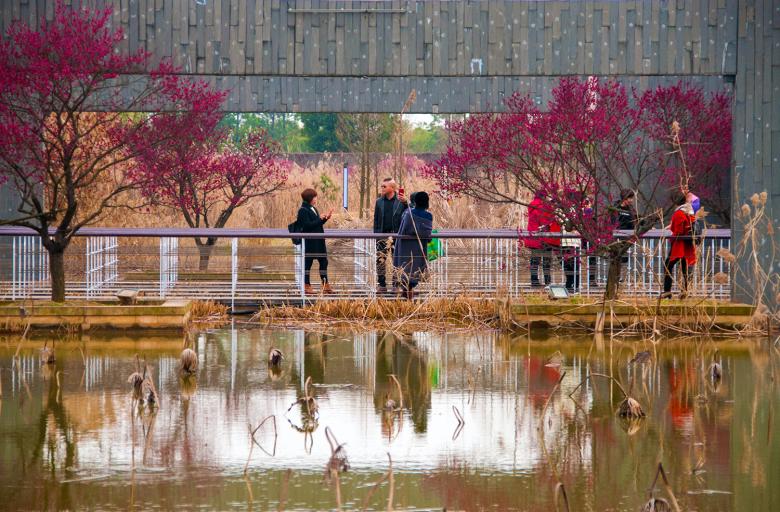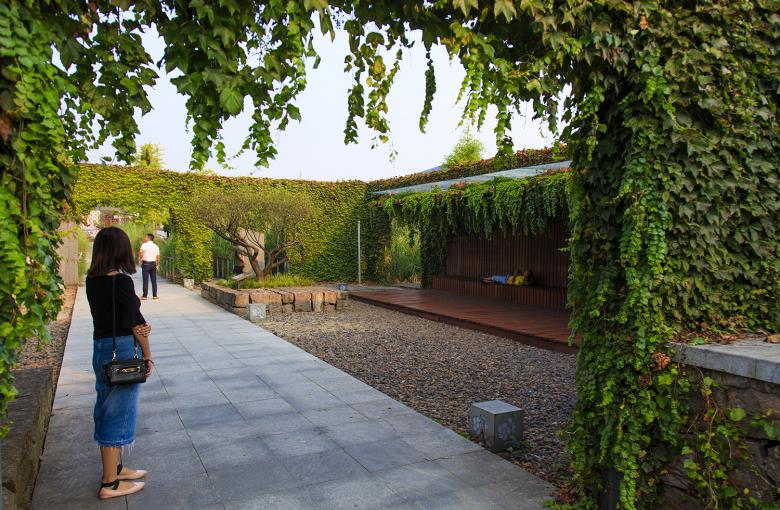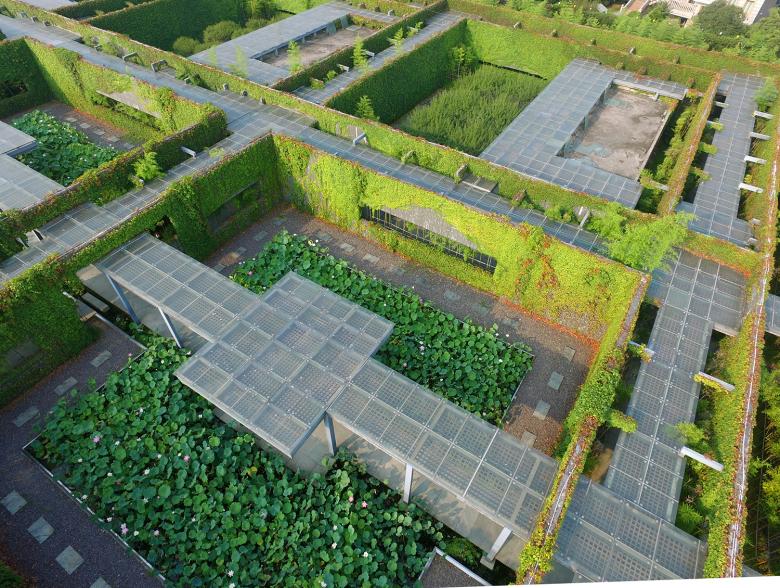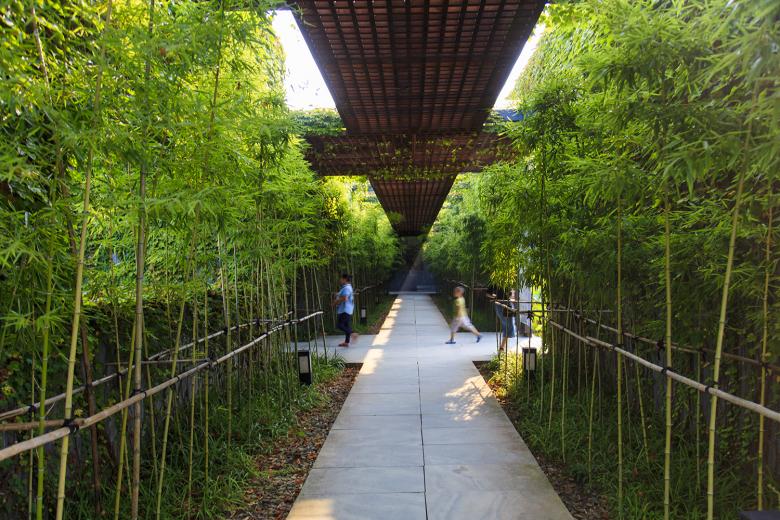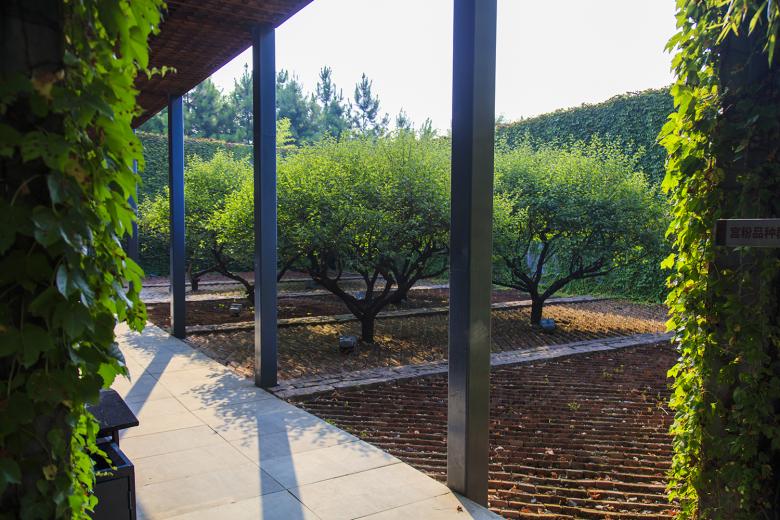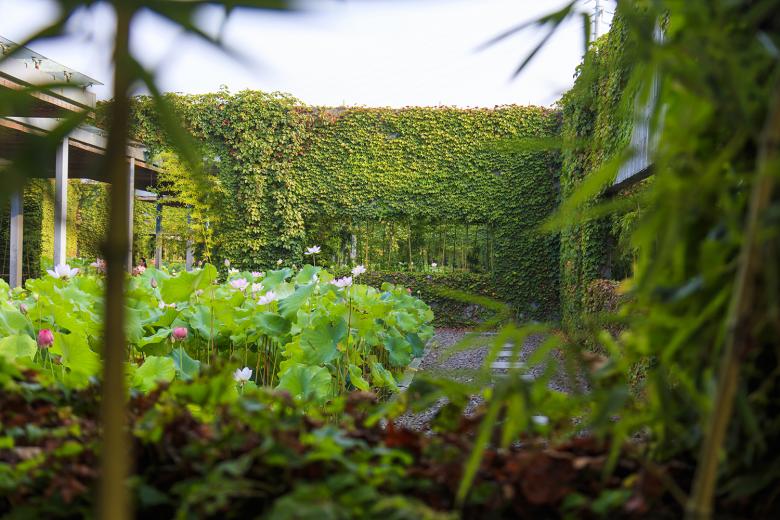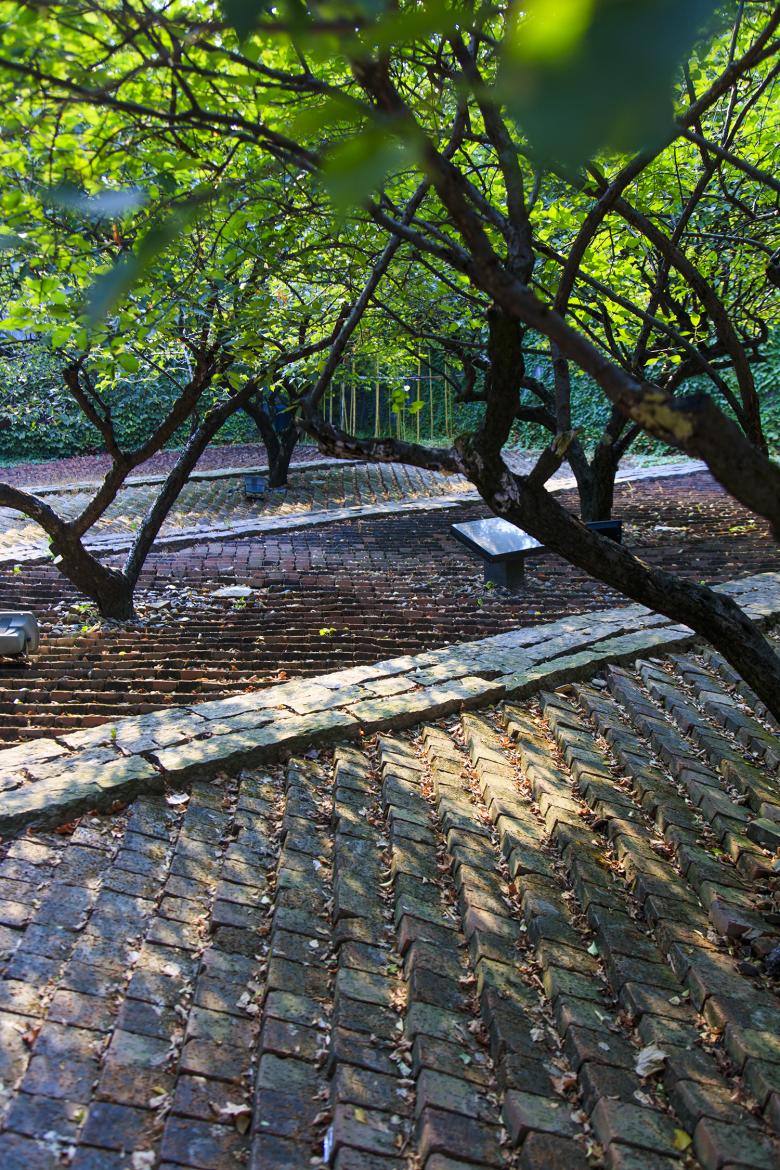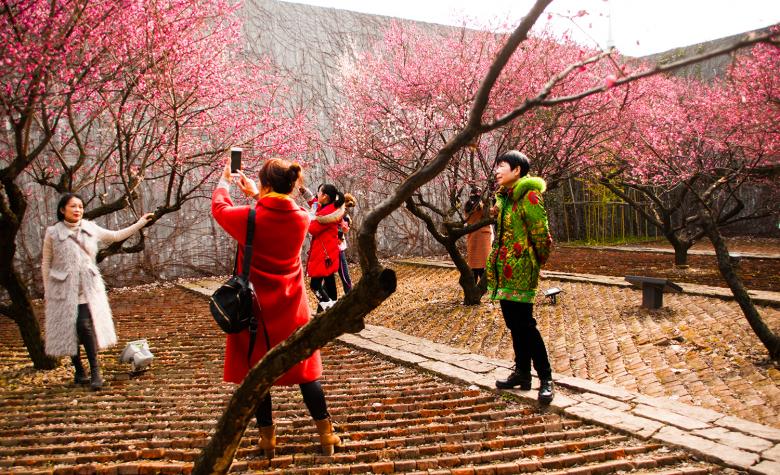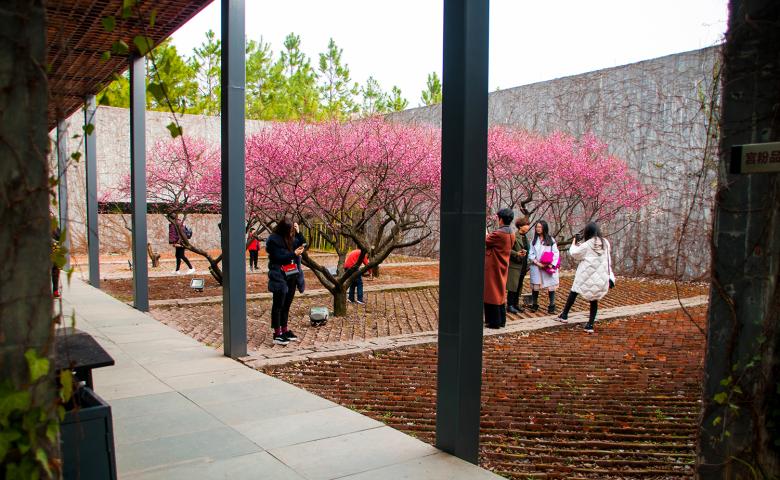The Mei Garden: Poetic and Picturesque Ecology
Jinhua, China
- ランドスケープ アーキテクト
- Turenscape
- 場所
- 321000 Jinhua, China
- 年
- 2013
- クライエント
- Jinhua City Government
1.Project statement
This project uses cut-and-fill strategy to create a constructed wetland that cleans eutrophic water and restores native habitats for biodiversity, adapts the hot and rainy subtropical monsoon climate for everyday outdoor use, and creates a matrix of explorative spaces inspired by the poetic and picturesque nature of traditional gardening and flower appreciation.
2.Challenges and Objectives
In early 2010, the landscape architect was asked to design the Mei Flower Garden in Jinhua City, Zhejiang Province, particularly for the appreciation of the Mei Flower, also known as the Plum Blossom, arguably the most appreciated flower in Chinese culture. For over two thousand years, scholars have put in ink hundreds and thousands of poems and paintings appreciating this particular flower. It is a symbol of the moral characteristics highly valued by the Chinese scholars, such as modesty, righteousness,independence, solitude, courtesy, etc., largely because the Mei flowers bloom lonely in the earliest spring and have delicate colors, forms and fragrances. The Mei Flowers should not be displayed in plain sight but rather hidden away. Those seeking to appreciate the flowers must embark on explorations to find the hidden blossoms, or encounter them unexpectedly during an arduous journey. This kind of poetic and picturesque appreciation were designed in the Chinese classical gardens, where a scholar would be sitting in solitude in his courtyard or wandering among the artificial rockeries.
But how can a contemporary garden be designed to respect and echo such a rich traditional cultural heritage? The design must overcome the following challenges:
The first challenge is spatial: how to design the space and setting so that the poetic and picturesque method of the Mei Flower appreciation can be achieved while accommodating hundreds of visitors at the same time, instead of a few scholars in a private garden?
The second challenge stems from the physiology of the Mei Flower: the Mei Flower has a very short blooming season, from early February to early March before leaves come out, and it loses its charm immediately after that. Furthermore, the Mei Flower is small and quietly elegant in color, making it barely visible. How can the garden be attractive and visible in all seasons?
The third challenge comes from the site itself: It is a piece of deserted riparian plain claimed by the building of a hundred-year flood wall. It was narrow and swampy lowland piled with building debris, garbage, and urban runoff. The nearby river water was heavily contaminated (eutrophic). The Mei Flower is picky for its habitat and needs good drainage. While rich water resource is a blessing for an interesting garden, the heavily polluted water presents a major challenge.
The fourth Challenge is the local climate: Jinhua is dominated by the sub-tropical monsoon climate. It is wet and hot in the summer and has about 80 inches of annual precipitation. Outdoor recreational activities are not comfortable for the spring, summer and winter.
In addressing the above challenges, the design takes the following strategies:
3.Design Strategies
(1) Cut-and-fill to create a terraced valley: Making use of the existing terrain, a simple cut-and-fill technique is used to transform the landform and the garbage dump into a 20 foot deep urban oasis. The top terraces of the valley are covered with evergreen vegetation including pine and bamboo that become the backdrop for the Mei Flower groves on the middle terraces. At the bottom of the valley is a constructed wetland with boardwalks on both sides of the creek.
(2) Construct a wetland to clean the eutrophic water: To adapt to the monsoon climate, the constructed wetland at the bottom of the terraced valley is designed as a green sponge and bio-filter that retains and remediates the urban runoff and the polluted river water that is pumped from the nearby river in by a windmill. Four ecologically designed weirs are created to slow down the water flow running from the south to the north end where the cleansed water sinks into the lotus ponds. Each of the bio-filters are composed of multiple vegetation bends, and are integrated with east-west paths and walled boxes that exhibit samples of the Mei Flower.
(3) A matrix of boxes hiding the famous flowers: At the end of the creek and after the water is cleansed by the constructed wetland, the water runs through a matrix of nine boxes and front and rear clearings. The boxes are 4.5 meters (about 15 ft) high and 24X24 meters (about 79 ft) in size. 6 boxes are designed to exhibit Mei Flower of various cultivars; each box is floored with one of the local materials, including black or red tiles, black or red bricks, or white or red gravel. Three boxes in the middle row are water gardens filled with lotus, another poetic flower highly appreciated in Chinese tradition that symbolizes cleanliness and purity despite the dirty environment. It blooms in the summer and has magnificent foliage that is appreciated all through the seasons, and even in winter when its foliage is withered. The black walls are largely covered with Parthenocissus tricuspidata, an creeper plant that grows to cover surfaces and displays brilliant red and golden colors in the fall The individual boxes are interconnected through a network of corridors that are integrated with awnings, providing shade and protecting visitors from rain, creating a comfortable experience even during the sweating hot summer and sticky rainy days. The foliage covered walls are pierced with viewing windows that are inspired by the Chinese traditional garden walls to create a porous landscape.
In addition to the spaces created as such, a network of paths and an environmental interpretation system is designed that explains the ecology of water cleansing processes, the science of rehabilitation, and information about the Mei Flower.
As a result, and after 6 years, the Mei Garden has become a popular place for the residents to visit, whether it is to appreciate the Mei Flower, engage in daily exercise and recreation, or as an educational site to learn about water ecology, native habitats, and climate adaptation.
関連したプロジェクト
Magazine
-
蓮山居
6 day ago
-
宮前の家
1 week ago
-
Swiss Visions ─ 新世代の表現手法
2 week ago
-
庭園緑地の邸宅
2 week ago
-
根津のすみ
2 month ago
